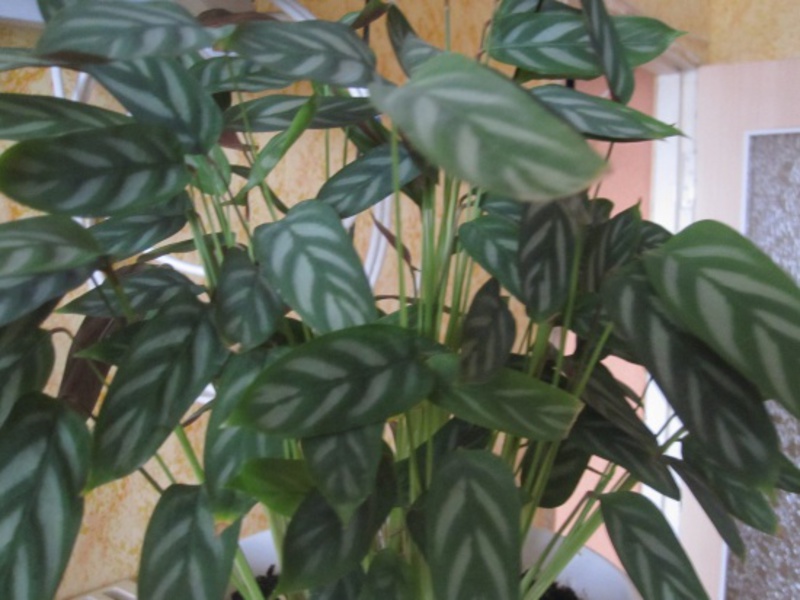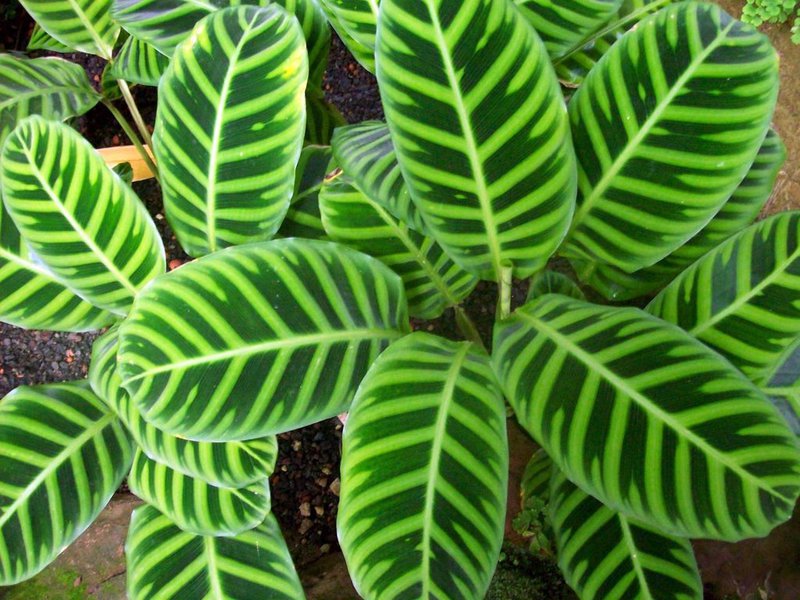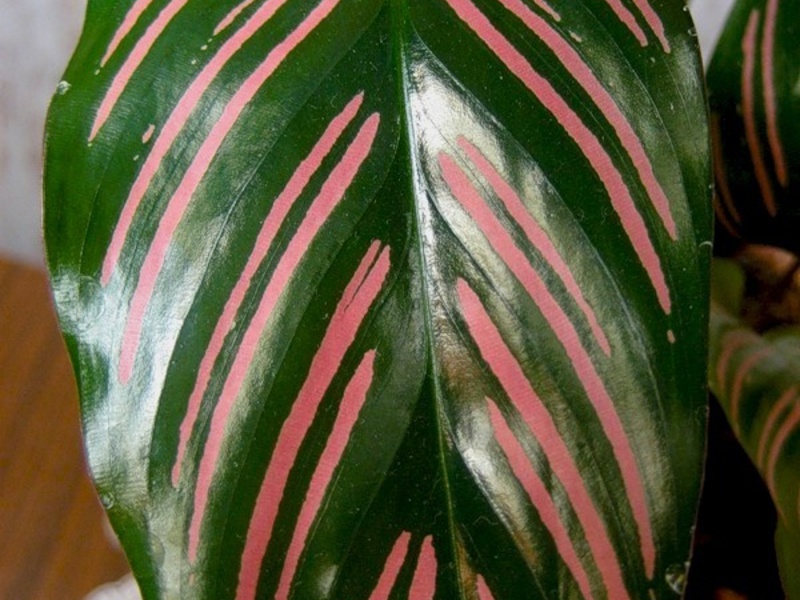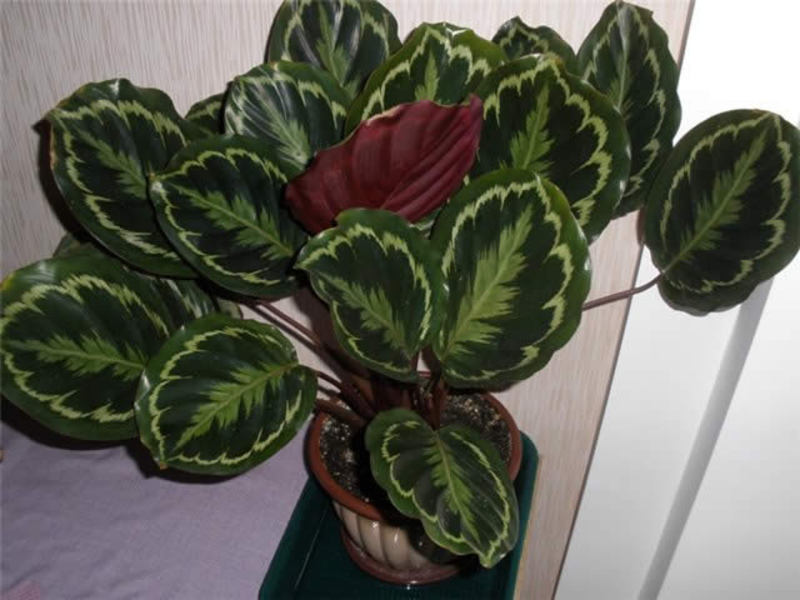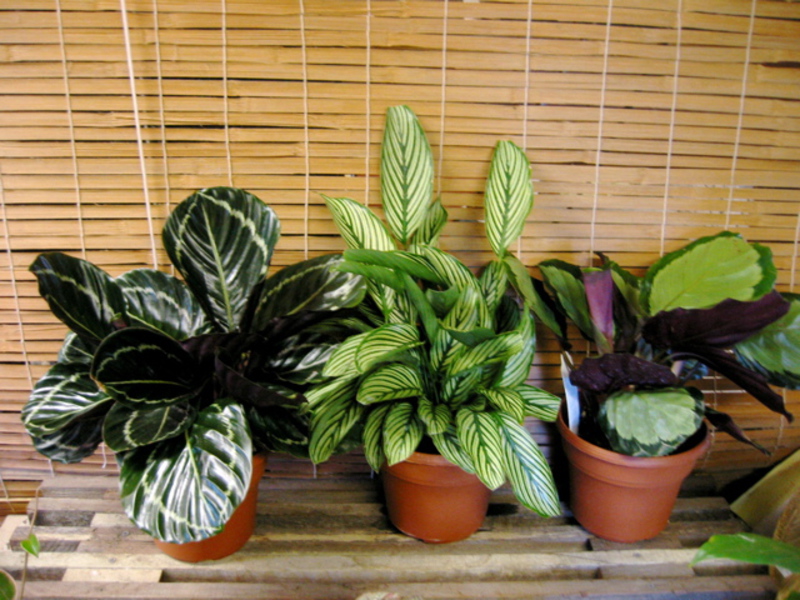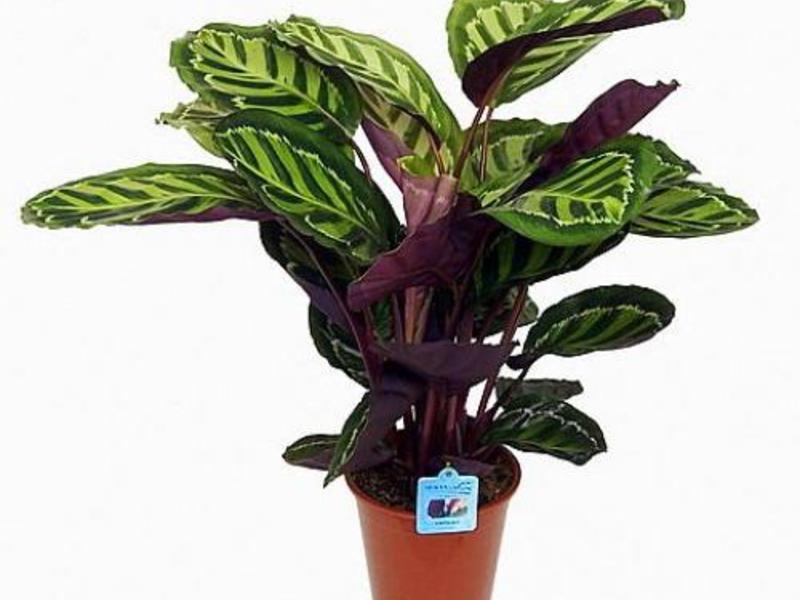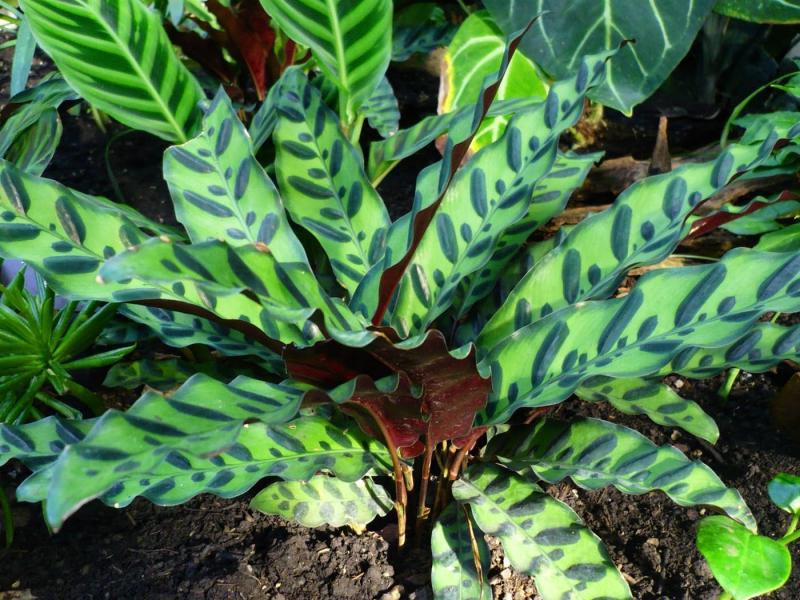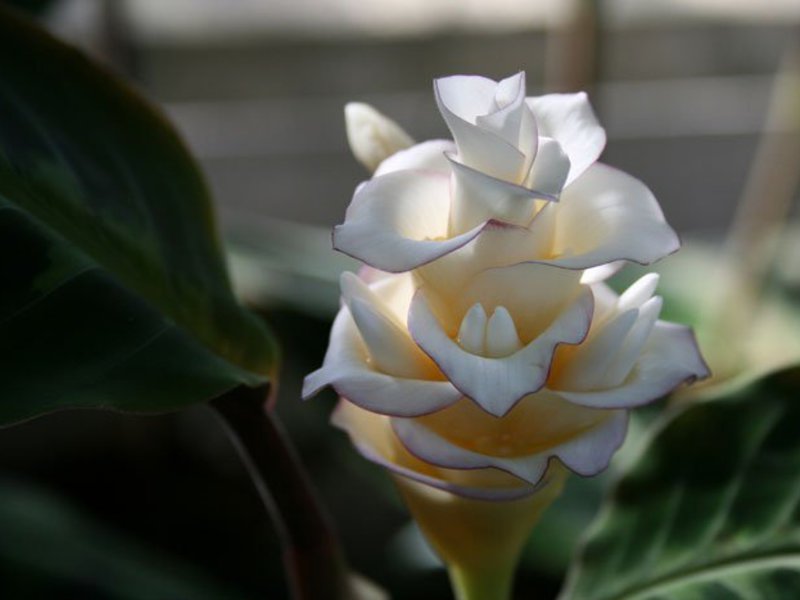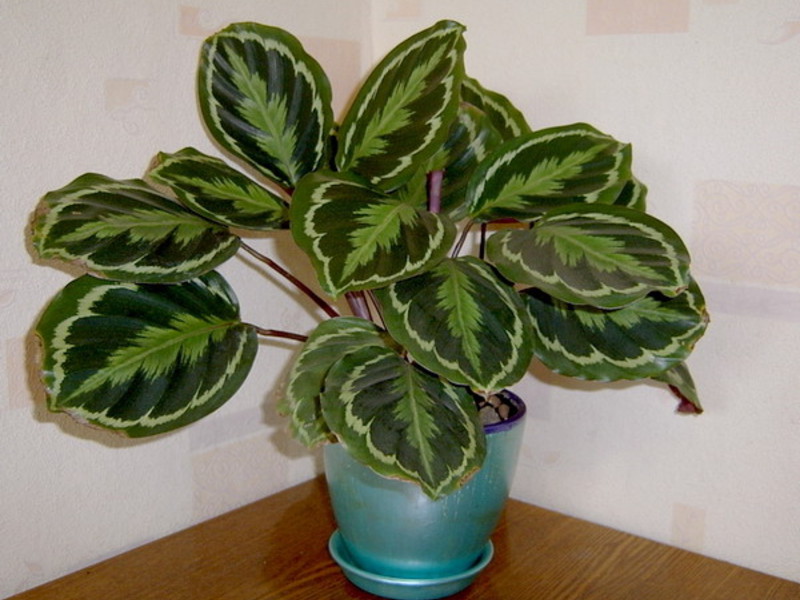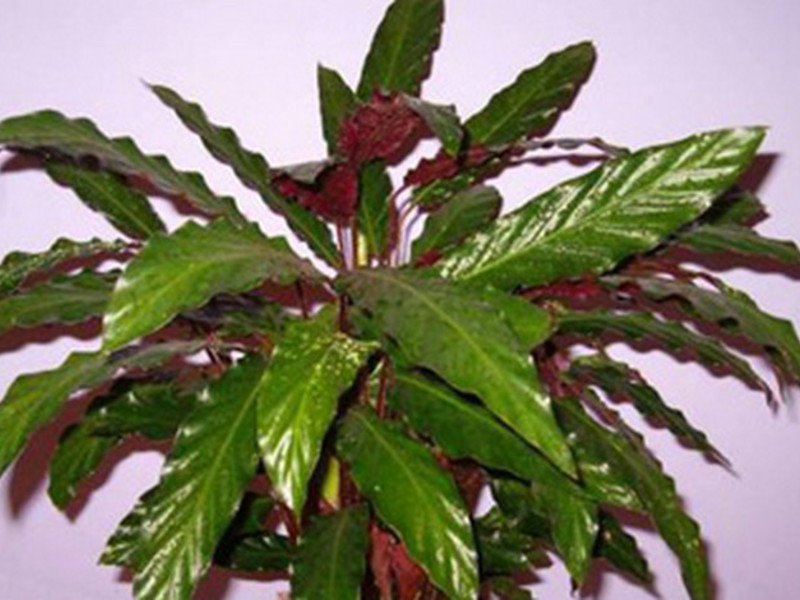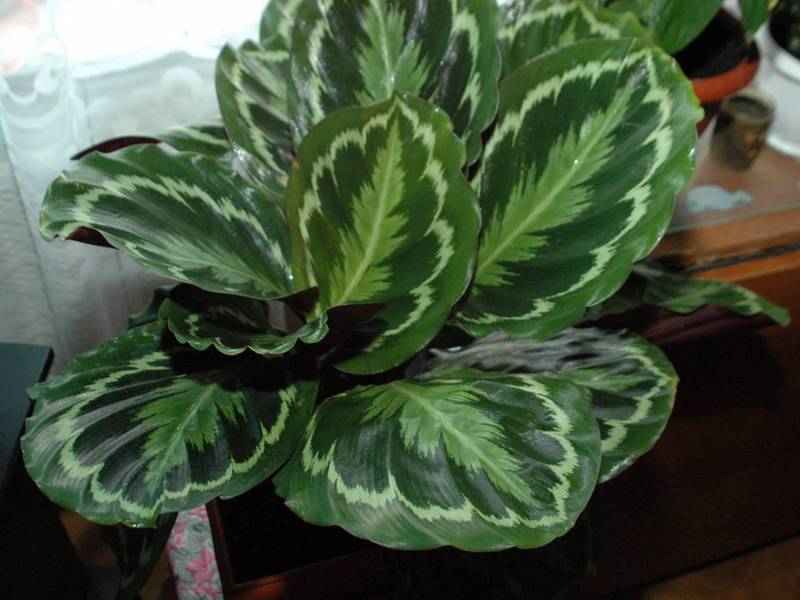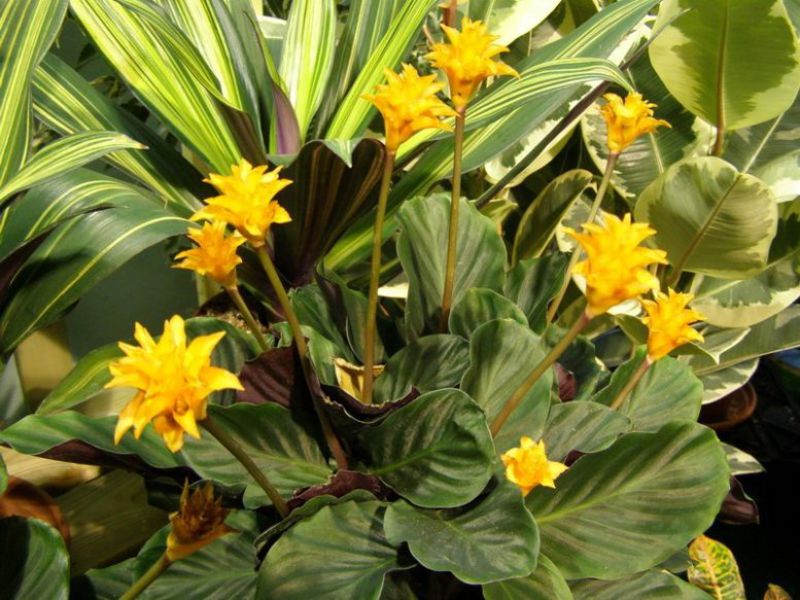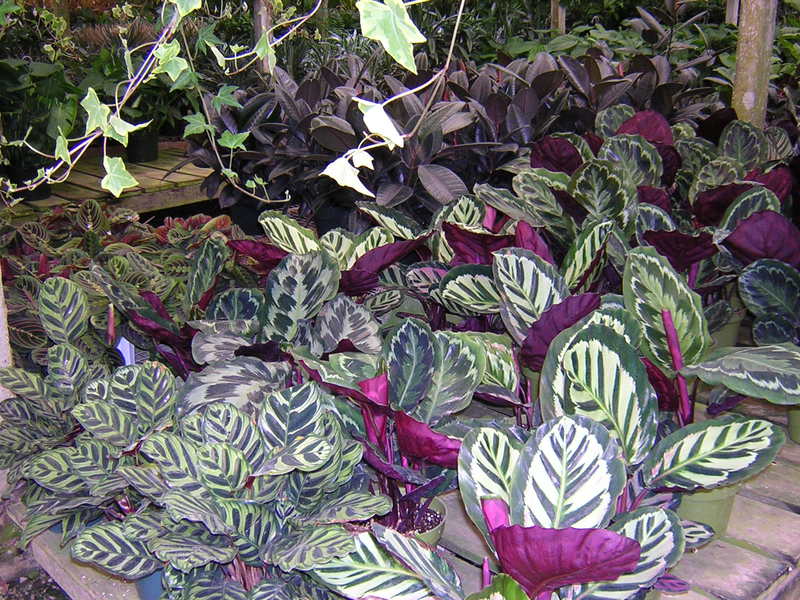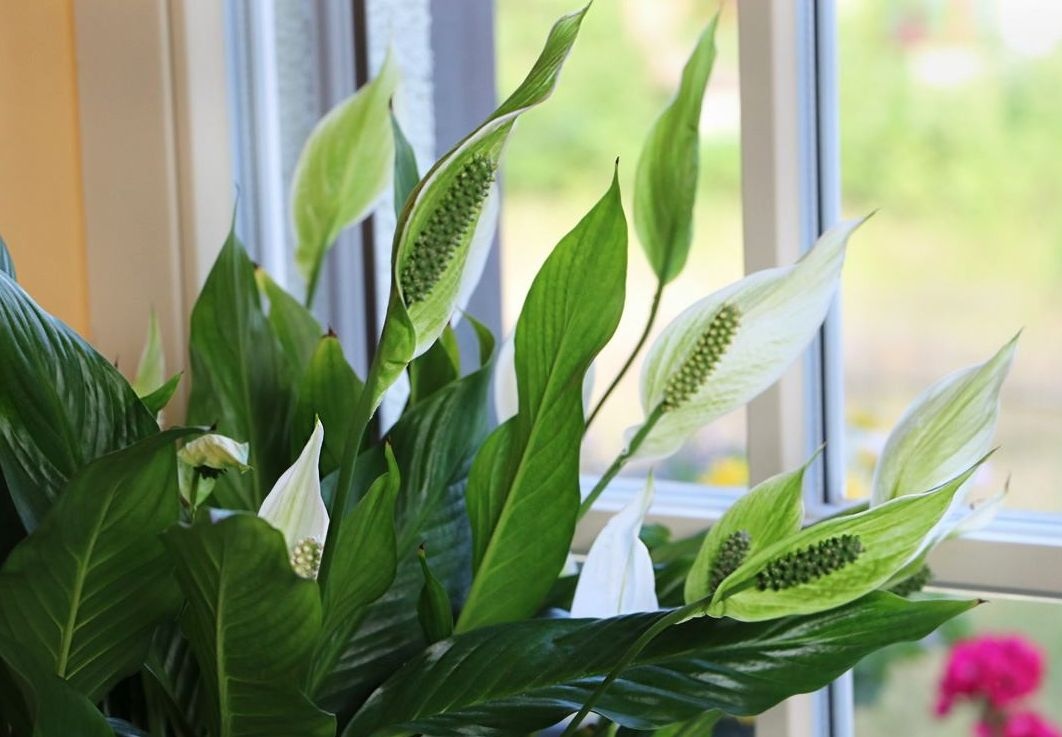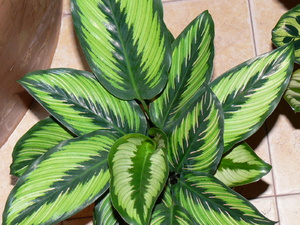 In the group of decorative deciduous perennials, you can find many interesting plants that can be used for growing indoors. Calathea can be a good interior decoration. In height, it usually grows to 70-80 cm. Many varieties form oblong-oval leaves, reaching a length of 30 cm, which grow on long petioles. At the same time, there are varieties that are decorated with lanceolate leaves.
In the group of decorative deciduous perennials, you can find many interesting plants that can be used for growing indoors. Calathea can be a good interior decoration. In height, it usually grows to 70-80 cm. Many varieties form oblong-oval leaves, reaching a length of 30 cm, which grow on long petioles. At the same time, there are varieties that are decorated with lanceolate leaves.
Shoots at calathea, as a rule, are formed underground, originating from the rhizome. It is in this place that short vertical shoots begin to grow, on which over time leaf rosettes are formed... A characteristic feature of the ornamental species of calathea is that, as a rule, there is only one fully developed leaf in the outlet.
Calathea flowers bloom in spring and summer, forming spike-shaped inflorescences with various shades. Flowers have a three-membered shape, presented in the form of spike-shaped inflorescences, subdivided into apical or axillary.
Interest in kalatea is mainly due to its unusual color of leaves: it is not limited to pure green, but can provide for various patterns of stripes and spots of various shades, ranging from yellow to red-brown. There are also such varieties of calathea, in which the leaves in appearance are very similar to the plumage of a peacock or other fabulous birds.
In ancient times, calathea was used not only for decorative purposes: the leaves often served as material for weaving a variety of products. This explains why the genus Calothea has such a name (Greek "calathos" - basket).
Although no one doubts the beauty of these plants, it is not so easy to care for them. Even though they do not make such high demands on air humidity, however, this is a prerequisite for their normal development. Temperature fluctuations have a negative effect on calathea. Therefore, it is best to keep the plant pot on a closed flower window.
Content
Types of calathea
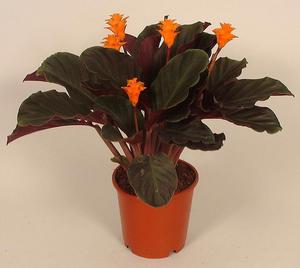 Calathea Bahema (Calathea bachemiana). The natural habitat of the variety is the tropical rainforests of Brazil. Representing a group of stemless plants, Bahema's calathea can grow up to 40 cm in height. The characteristic shape of the leaves is oblong-lanceolate with a heart-shaped base, usually 15-25 cm long and 3-9 cm wide. As you move to the top, the leaves taper.
Calathea Bahema (Calathea bachemiana). The natural habitat of the variety is the tropical rainforests of Brazil. Representing a group of stemless plants, Bahema's calathea can grow up to 40 cm in height. The characteristic shape of the leaves is oblong-lanceolate with a heart-shaped base, usually 15-25 cm long and 3-9 cm wide. As you move to the top, the leaves taper.
On the upper side they have a greenish-silvery color with dark green spots that run along the midvein, and on the lower side they have a whitish-green color. Flowers form spike-shaped inflorescences, reaching 6 cm in length, are formed on pedicels 2-2.5 cm in length.
Calathea Varshevich (Calathea warscewiczii). This variety develops velvety leaves that are oval in shape and dark green in color with a light green pattern along the central vein. They have a purple hue below. The flowers form spike-shaped inflorescences, the characteristic shade is white, cream, pink.Formed on a shortened peduncle.
Calathea Vic or Veicha (Calathea veitchiana). Under natural conditions, this species grows in tropical rainforests in Peru. It is a tall plant, can reach a height of 90 cm. The leaves are oval, stand out in large size, have a length of 20-30 cm, and a width of 10-15 cm. Closer to the apex they have a short pointed.
A weakly expressed heart-shaped form can be traced at the base. Strong in structure. The characteristic color is dark green. On the upper side there are stripes of a light yellow-green hue, on the lower side there are light yellowish stripes located on a reddish background. The flowers form spike-shaped inflorescences with a white tint. They grow on a leg, are 20 cm long.
Calathea is wonderful (Calathea insignis). During the growing season forms narrow long leaves measuring 24-27 cm in length and 5 cm in width. Leaf blades have a wavy border, grow on a green petiole without pubescence. On the upper side of the leaves, dark green ovals are visible, which are arranged in an alternating order of small and large. The underside of the leaves has a purple hue, in which it is similar to a leaf cushion.
Calathea zebra (Calathea zebrina). The natural habitat of this species is the tropical rainforests of Brazil. A tall plant, can reach a height of 40-60 cm. The leaves are formed from the base of the roots, have an elliptical shape, grow up to 40 cm long and 16 cm wide. On the upper side they have a green tint, wide light feathery stripes, on the lower side they are reddish. The flowers form spike-shaped inflorescences that are dense, almost round or ovoid. Characteristic color - white or lilac, grows on a shortened stalk.
Calathea leopard (Calathea leopardina). Under natural conditions, this species is found in tropical rainforests in tropical America. They belong to the group of stemless plants. They can reach a height of 40-50 cm.The characteristic shape of the leaves is elliptical-lanceolate, 10-12 cm long, 3-5 cm wide.The upper side has a light green color, which is complemented by dark green elliptical-oblong spots located close to the base with a midrib. The flowers form spike-shaped inflorescences with a yellow color.
Calathea care
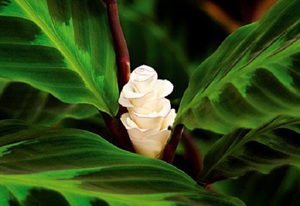 A photo of this indoor plant will interest many flower growers, but it will look like that only if you create favorable conditions for it in the house.
A photo of this indoor plant will interest many flower growers, but it will look like that only if you create favorable conditions for it in the house.
Correct cultivation of calathea provides for the creation of certain conditions in the room, without which it is impossible to achieve not only the normal development of the plant, but also flowering.
Lighting
Given that calatheas are accustomed to growing in shade conditions, it is recommended for them to provide diffused lighting... In winter, the light should also be no less abundant. In the spring and summer, Calathea can be severely affected by direct sunlight. The quality of the sun protection directly affects the size and color of the leaves. In very bright light, the leaves begin to fade, and over time, the leaf blade decreases in size.
Recommended to grow on the east or west side. You can also keep a flower pot on the south window, but you must definitely create an artificial shade from the direct sun. It is allowed to grow calathea under artificial lighting conditions: in this case, fluorescent lamps are used, which must be turned on for 16 hours a day.
Temperature
Caring for a Galatea flower in the spring-summer period requires maintaining the temperature within 22-30 degrees Celsius, at night a slight decrease in temperature is allowed. In winter, regardless of the time of day, the temperature should not fall below 18 degrees and rise above 25 degrees. Serious stress for calathea is temperature fluctuations and drafts... During care, attention should be paid to the temperature of the soil, which should be warmed up to 18-20 degrees, and in the summer - up to 22 degrees. In case of hypothermia of the roots, the plant begins to grow more slowly.
Watering
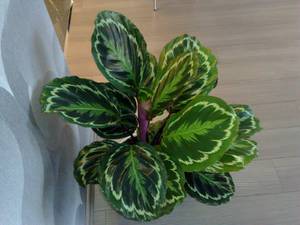 It is possible to grow a Galatea flower in room conditions only with abundant watering, which is carried out as the upper layer of the substrate dries. Leaving in the fall and winter requires a reduction in watering. You can only use warm, settled water. When determining the frequency of watering, it is necessary to take into account that the soil should not dry out, become waterlogged, and at the same time, the root system of plants should not cool. The greatest harm is caused by waterlogging of the soil to Kalatea Makoi.
It is possible to grow a Galatea flower in room conditions only with abundant watering, which is carried out as the upper layer of the substrate dries. Leaving in the fall and winter requires a reduction in watering. You can only use warm, settled water. When determining the frequency of watering, it is necessary to take into account that the soil should not dry out, become waterlogged, and at the same time, the root system of plants should not cool. The greatest harm is caused by waterlogging of the soil to Kalatea Makoi.
Air humidity
Calathea feels most comfortable in the house if it is maintained during care air humidity in the range from 70 to 90%... It is also necessary to regularly spray the plant throughout the season. For this, it is recommended to use well-settled or filtered water. It should be sprayed only in small drops, since large particles of water can lead to the appearance of dark spots on the leaves.
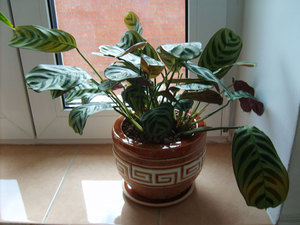 calathea will be able to develop normally at home only if the maximum air humidity is maintained in the room. In dry air, care requires spraying the plants at least once, and preferably twice a day;
calathea will be able to develop normally at home only if the maximum air humidity is maintained in the room. In dry air, care requires spraying the plants at least once, and preferably twice a day;- You can maintain optimal humidity if the flower is placed on a pallet filled with moist moss, expanded clay or pebbles. An alternative solution is to install a humidifier. Be sure to take care that the pot does not touch the water;
- An effective measure to help maintain high humidity is to cover the plant with plastic bags. The most favorable conditions for growing calathea can be created in mini-greenhouses, florariums, terrariums, in which plant care is even more simplified.
Fertilizer
Plant feeding is carried out during the entire growing season at intervals of once every two weeks, using fertilizers intended for flowering plants. In winter the frequency of feeding is reduced to once every 5-6 weeks... You especially need to be careful with fertilizers rich in calcium and nitrogen, an excess of which can inhibit calathea.
Transfer
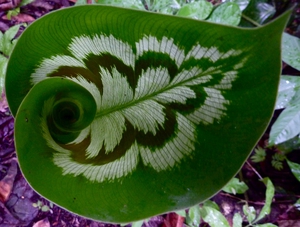 You can transplant young plants at home every year, and old bushes - no more than once every two years, planning this operation in late spring or summer. Before transplanting, be sure to cut off old dying leaves. A shallow container is used as a new one. It is filled with soil that has a humus, loose and permeable structure and the reaction ph is not higher than 6. As a self-prepared planting soil, you can use a mixture, for which they take:
You can transplant young plants at home every year, and old bushes - no more than once every two years, planning this operation in late spring or summer. Before transplanting, be sure to cut off old dying leaves. A shallow container is used as a new one. It is filled with soil that has a humus, loose and permeable structure and the reaction ph is not higher than 6. As a self-prepared planting soil, you can use a mixture, for which they take:
- leafy ground;
- peat;
- sand.
All components are taken in proportions of 2: 1: 1.
If desired, you can add crushed charcoal to it. If it is difficult to get all the necessary components for preparing potting soil for calathea, then it can be replaced with store-bought soil for arrowroot. In addition, you can use azalea soil for transplanting. The containers prepared for transplantation must necessarily have high-quality drainage.
Reproduction
The main methods of reproduction of calathea at home is sowing seeds and dividing the rhizome. Calatheas, representing a group of stemless plants, form rhizomes and nodules every year. Over time, adult specimens of rhizomes begin to develop, so they can get high-quality planting material for division.
- choosing large specimens, they must be carefully divided into two or three new seedlings. However, here you need to be very careful not to damage the roots;
- peat-based substrate is used as planting soil;
- at the end of the transplant, the soil is watered with slightly warm water, and then the surface is allowed to dry before another watering is carried out.
Cover the pots with a loosely tied plastic bag and transfer to a warm place. They should remain in this state until the plant begins to grow and form new leaves.
Possible difficulties
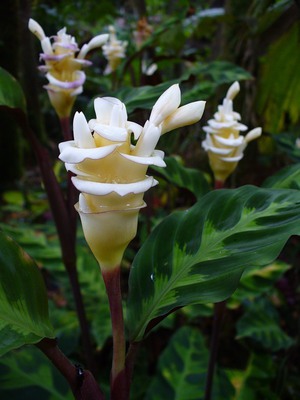 Florists often note that calathea grows slowly, and the tips of the leaves become brown and dry. Most often this happens due to low air humidity.
Florists often note that calathea grows slowly, and the tips of the leaves become brown and dry. Most often this happens due to low air humidity.
If the ends of the leaves have acquired a yellow-brown tint, then the reason should be sought in the excess or deficiency of nutrients in the soil.
If the leaves constantly curl up and have spots on the surface, then this can be explained by too rare watering. The situation can be corrected if the soil is constantly kept moist.
Under certain conditions, the stems become lethargic and begin to rot... This is observed under unfavorable growing conditions - low temperatures and high humidity.
Conclusion
Despite the fact that for many flower growers the decorativeness of indoor plants is often in the first place, it is still necessary to take into account the difficulties of growing a plant. Having decided to start breeding calathea at home, even a florist who does not have much experience is unlikely to face great difficulties in caring for her.
If no special recommendations can be given regarding temperature, then watering must be treated with special attention. It is necessary to water the calathea very carefully, avoiding moisture in the leaf axils, otherwise it will lead to decay.
